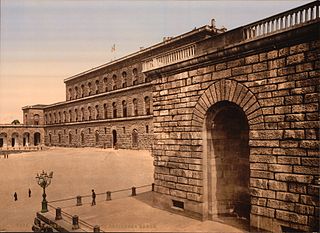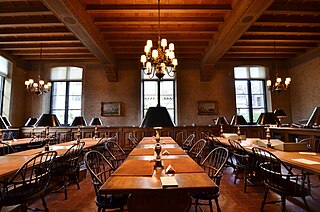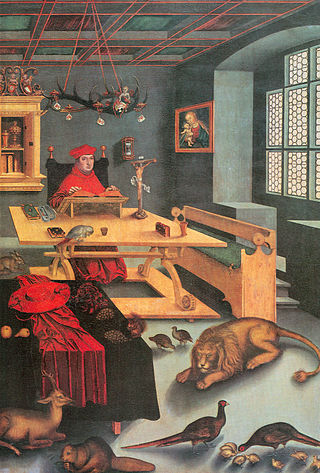
A museum is a community service that displays and preserves objects of significance. Many museums have exhibitions of these objects in public display, and some have private collections that are used by researchers and specialists. Compared to a library, a museum hosts a much wider ranges of objects and usually focus around a specific theme such as the arts, science, natural history, local history, and other topics. Public museums that host exhibitions and interactive demonstrations are often considered to be tourist attractions, and many museums attract large numbers of visitors from outside their host country, with the most visited museums in the world regularly attracting millions of visitors annually.

The hobby of collecting includes seeking, locating, acquiring, organizing, cataloging, displaying, storing, and maintaining items that are of interest to an individual collector. Collections differ in a wide variety of respects, most obviously in the nature and scope of the objects contained, but also in purpose, presentation, and so forth. The range of possible subjects for a collection is practically unlimited, and collectors have realised a vast number of these possibilities in practice, although some are much more popular than others.

An art museum or art gallery is a building or space for the display of art, usually from the museum's own collection. It might be in public or private ownership, be accessible to all, or have restrictions in place. Although primarily concerned with visual art, art museums are often used as a venue for other cultural exchanges and artistic activities, such as lectures, jewelry, performance arts, music concerts, or poetry readings. Art museums also frequently host themed temporary exhibitions, which often include items on loan from other collections.

The Isabella Stewart Gardner Museum is an art museum in Boston, Massachusetts, which houses significant examples of European, Asian, and American art. Its collection includes paintings, sculpture, tapestries, and decorative arts. It was founded by Isabella Stewart Gardner, whose will called for her art collection to be permanently exhibited "for the education and enjoyment of the public forever."

The Palazzo Vecchio is the town hall of Florence, Italy. It overlooks the Piazza della Signoria, which holds a copy of Michelangelo's David statue, and the gallery of statues in the adjacent Loggia dei Lanzi.

The Palazzo Pitti, in English sometimes called the Pitti Palace, is a vast, mainly Renaissance, palace in Florence, Italy. It is situated on the south side of the River Arno, a short distance from the Ponte Vecchio. The core of the present palazzo dates from 1458 and was originally the town residence of Luca Pitti, an ambitious Florentine banker.

Cabinets of curiosities, also known as cabinets of wonder and wonder-rooms, were collections of notable objects. Although more rudimentary collections had preceded them, the classic cabinets of curiosities emerged in the sixteenth century. The term cabinet originally described a room rather than a piece of furniture. Modern terminology would categorize the objects included as belonging to natural history, geology, ethnography, archaeology, religious or historical relics, works of art, and antiquities. In addition to the most famous and best documented cabinets of rulers and aristocrats, members of the merchant class and early practitioners of science in Europe formed collections that were precursors to museums.

Japonisme is a French term that refers to the popularity and influence of Japanese art and design among a number of Western European artists in the nineteenth century following the forced reopening of foreign trade with Japan in 1858. Japonisme was first described by French art critic and collector Philippe Burty in 1872.

Isabella Stewart Gardner was a leading American art collector, philanthropist, and patron of the arts. She founded the Isabella Stewart Gardner Museum in Boston.

Shelburne Museum is a museum of art, design, and Americana located in Shelburne, Vermont, United States. Over 150,000 works are exhibited in 39 exhibition buildings, 25 of which are historic and were relocated to the museum grounds. It is located on 45 acres (18 ha) near Lake Champlain.

The Frick Art Reference Library is the research arm of The Frick Collection. Its reference services have temporarily relocated to the Breuer building at 945 Madison Avenue, called Frick Madison, during the renovation of the Frick's historic buildings at 10 East 71st Street in New York City. The library was founded in 1920 and it offers public access to materials on the study of art and art history in the Western tradition from the fourth to the mid-twentieth century. It is open to visitors 16 years of age or older and serves the greater art and art history research community through its membership in the New York Art Resources Consortium.

A private collection is a privately owned collection of works or valuable items. In a museum or art gallery context, the term signifies that a certain work is not owned by that institution, but is on loan from an individual or organization, either for temporary exhibition or for the long term. This source is usually an art collector, although it could also be a school, church, bank, or some other company or organization. By contrast, collectors of books, even if they collect for aesthetic reasons, are called bibliophiles, and their collections are typically referred to as libraries.

A cabinet painting is a small painting, typically no larger than two feet in either dimension, but often much smaller. The term is especially used for paintings that show full-length figures or landscapes at a small scale, rather than a head or other object painted nearly life-size. Such paintings are done very precisely, with a great degree of "finish". From the fifteenth century onward, wealthy collectors of art would keep these paintings in a cabinet, which was a relatively small and private room to which only those with whom they were on especially intimate terms would be admitted. A cabinet, also known as a closet, study, office, or by other names, might be used as an office or just a sitting room. Heating the main rooms in large palaces or mansions in the winter was difficult, so small rooms such as cabinets were more comfortable. They offered more privacy from servants or other household members and visitors. Typically, a cabinet would be for the use of a single individual; a large house might have at least two and often more.

The Reynst Collection, probably the most extensive Dutch 17th-century collection of art and artefacts, was owned by the Dutch merchants Gerrit Reynst and Jan Reynst. The collection was put on display in their house at the sign of Hope on the Keizersgracht in Amsterdam. It consisted of over 200 Italian paintings and over 300 sculptures, most of them ancient Roman. There were other antiquities: ten sepulchral monuments, five votive reliefs, nine cinerary urns, "Etruscan" vases, and Christian objects, as well as engraved gems. The collection was dispersed in the 1660s and 1670s, after both brothers had died, and Gerrit's widow sold parts to various buyers.

A cabinet was a private room in the houses and palaces of early modern Europe serving as a study or retreat, usually for a man. The cabinet would be furnished with books and works of art, and sited adjacent to his bedchamber, the equivalent of the Italian Renaissance studiolo. In the Late Medieval period, such newly perceived requirements for privacy had been served by the solar of the English gentry house, and a similar, less secular purpose had been served by a private oratory.

The John and Mable Ringling Museum of Art is the official state art museum of Florida, located in Sarasota, Florida. It was established in 1927 as the legacy of Mable Burton Ringling and John Ringling for the people of Florida. Florida State University assumed governance of the museum in 2000.

The Archdukes Albert and Isabella Visiting a Collector's Cabinet is a 17th-century Flemish collaborative painting, now regarded as by Jan Brueghel the Elder and Hieronymus Francken II. It is part of the collection of The Walters Art Museum in Baltimore, Maryland.

A medical museum is an institution that stores and exhibits objects of historical, scientific, artistic, or cultural interest that have a link to medicine or health. Displays often include models, instruments, books and manuscripts, as well as medical images and the technologies used to capture them. Some museums reflect specialized medical areas, such as dentistry, nursing, this history of specific hospitals, and historic pharmacies.

Nicolaas Rockox (1560–1640), was an art patron and collector, numismatist, humanist, philanthropist and mayor of Antwerp. He was a close personal friend and important patron of Peter Paul Rubens. His residence in Antwerp was a centre where Antwerp's humanists and artists congregated and housed a large collection of artworks, antiques, rare objects and coins. It is now a museum known as the Snijders&Rockox House. He was knighted by Archduke Albert and Isabella, the Governor General of the Habsurg Netherlands.
Bernardo Paz is a former mining businessman and creator of Inhotim, an outdoor art complex and botanical garden in Brazil that was once home to his own personal rural estate and art collection. Paz commissioned works by contemporary artists for Inhotim and transformed it into a non-profit cultural institution, open to the public.





















